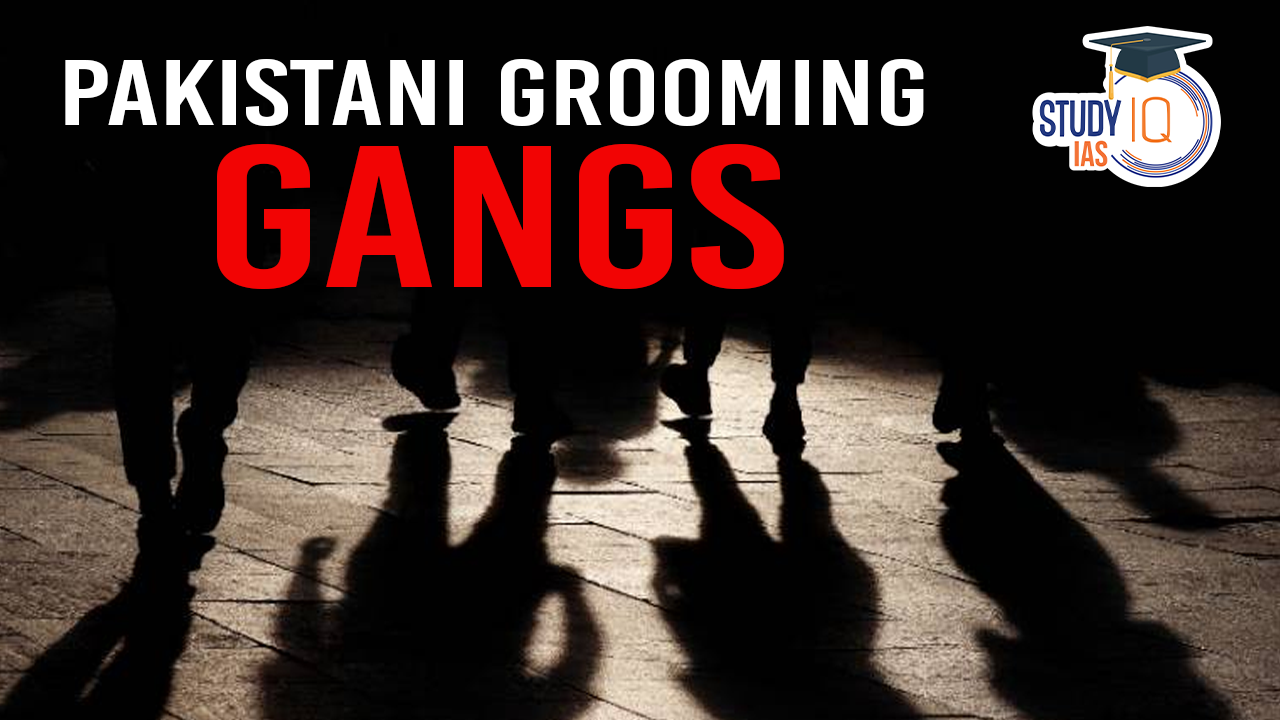Table of Contents
What Are the UK’s Pakistani Grooming Gangs?
The term “Pakistani grooming gangs” refers to organized groups of predominantly Pakistani-origin men involved in the systematic exploitation, sexual abuse, and trafficking of young white girls in the UK. These gangs have been operating in various towns and cities across the country, often targeting vulnerable girls from disadvantaged backgrounds or those in care homes.
Characteristics of the Grooming Gangs
- Modus Operandi: Victims are typically groomed through gifts, attention, and manipulation. Once trust is established, they are subjected to rape, torture, and trafficking.
- Targets: The victims are often minors, vulnerable due to their socioeconomic status or family situations.
- Geographical Spread: Cases have been reported across the UK, including towns like Rotherham, Telford, Rochdale, and Oldham.
- Ethnic Composition: While the perpetrators are described as “Asian” in some reports, the majority are of Pakistani heritage, leading to calls for more precise terminology to avoid stigmatizing broader Asian communities.
Institutional Failures
One of the most troubling aspects of these grooming gangs is the failure of institutions like the police, social services, and local councils to act decisively. Fear of being accused of racism often led authorities to downplay or ignore complaints, allowing the abuse to continue unchecked for years.
The Rotherham Scandal Involving Pakistani Grooming Gangs
The Rotherham scandal is one of the most notorious cases of organized sexual abuse by grooming gangs in the UK. An independent inquiry revealed the scale of abuse and institutional failures that allowed it to persist.
Key Details of the Scandal
Timeline:
- 1997-2013: The period during which the abuse primarily took place, with over 1,400 children estimated to have been sexually exploited.
- 2001: Early warnings about the abuse were raised, but little action was taken.
- 2010: The first major convictions were secured, but widespread abuse continued.
Nature of Abuse:
- Victims were subjected to rape, physical violence, and psychological manipulation.
- Perpetrators used threats and coercion to maintain control over the victims, often trafficking them across the UK.
Independent Inquiry (Jay Report):
- Published: 2014 by Professor Alexis Jay.
- Findings: The report highlighted the widespread nature of the abuse and the gross failure of local authorities to protect the victims.
- Ethnic Background: The majority of the perpetrators were identified as British-Pakistani men.
- Institutional Failures: Police and local councils failed to act due to fears of being labeled racist, prioritizing community relations over the safety of vulnerable children.
Key Figures:
- Victims: Over 1,400 children, predominantly white girls aged between 11 and 16.
- Perpetrators: Predominantly men of Pakistani heritage are involved in grooming and exploiting the victims.
Impact and Repercussions
Social and Political Response:
- Public Outcry: The revelations led to nationwide protests demanding justice for the victims and accountability from authorities.
- Government Response: Calls for a nationwide inquiry into grooming gangs were made, though political and social sensitivities often hindered comprehensive action.
Institutional Reforms:
- Police and Social Services: Faced intense scrutiny and calls for reform to ensure better protection of vulnerable children.
- Legislation and Policies: Strengthened to address grooming and sexual exploitation, with more emphasis on cultural sensitivities and community dynamics.
Ongoing Issues:
- Continued Abuse: Despite increased awareness and legal action, grooming gangs continue to operate in some areas.
- Terminology Debate: The term “Asian grooming gangs” remains controversial, with advocates pushing for more accurate descriptors to avoid unfairly implicating entire communities.
Conclusion
The Rotherham scandal and the broader issue of Pakistani grooming gangs in the UK underscore the critical need for accurate reporting, institutional accountability, and community engagement. By acknowledging the specific ethnic backgrounds of the perpetrators, authorities can better address the root causes and ensure justice for the victims, while also preventing the unjust stigmatization of wider communities.


 UNEP Champions of the Earth Award: UN's ...
UNEP Champions of the Earth Award: UN's ...
 Shilp Didi Programme: Empowering Women A...
Shilp Didi Programme: Empowering Women A...
 Is the Falling Rupee a Cause for Alarm?
Is the Falling Rupee a Cause for Alarm?

























